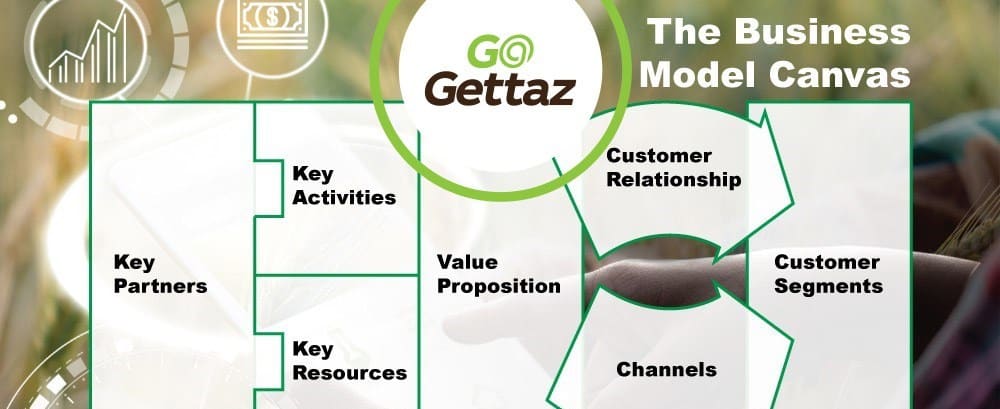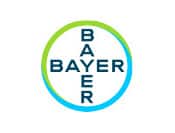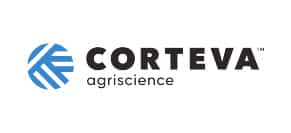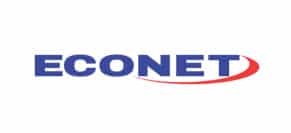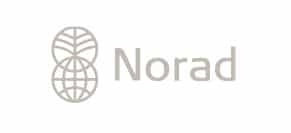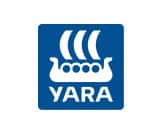Do you ever wonder what “people” mean when they say you need a proactive outlook to pre-plan your business methodology so you can disambiguate your competitive advantage? And what exactly is the difference between a business plan, a business strategy and a business model, anyway?
It’s confusing, right?
With that in mind, Swiss business theorist Dr Alexander Osterwalder asked a simple question: What if you had a visual way to represent a business model so EVERYONE can understand what you are talking about?
So, he created the Business Model Canvas. It is a simple diagram that you can draw on one sheet of paper, and it allows you to map, discuss, design, invent, challenge, or pivot any business model using 9 key building blocks.
With the coronavirus pandemic, millions of businesses have closed for lockdown. Many have locked their doors permanently. Because food and health products are essential, smart businesses who managed to change their business model have been able to continue serving their customers. Tools like the business model canvas help you to think about changes to your business so you can act fast.
What is a business model?
In a previous article we discussed business models and an excellent formula for innovating your business model. One of the tools we shared, the business model navigator, will be very valuable to use with the business model canvas when you plan or innovate your business.
For this Agripreneurship 101 article, a simple definition by The Blue Tribe Company says a business model is “how a business creates value for itself while delivering products and services to its customers.”
The 9 parts of the Business Model Canvas
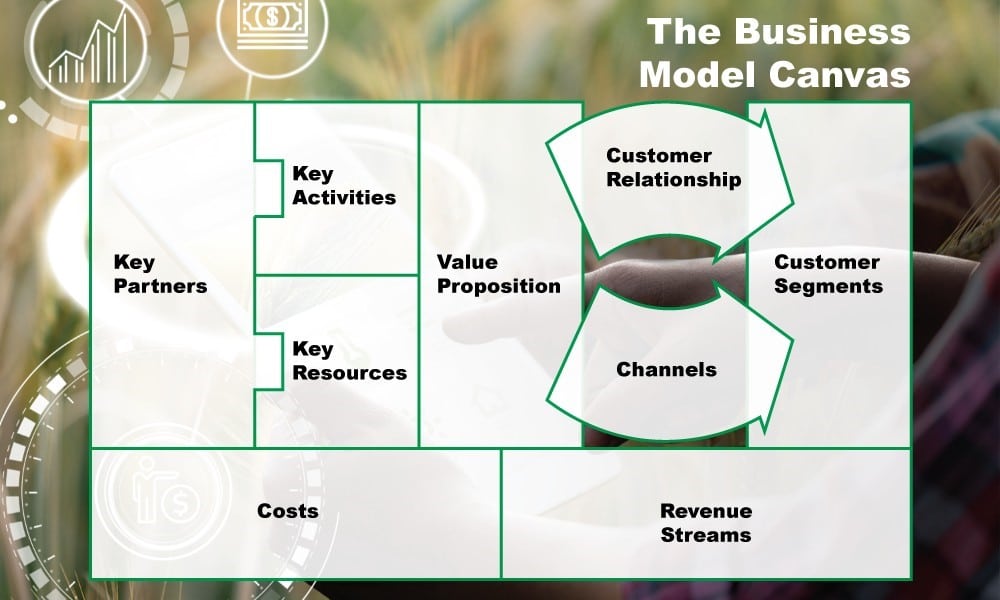
You can watch Dr Osterwalder’s quick explanation on youtube. You can also download his tools, like the business model canvas, the value proposition canvas, instruction manuals, and other resources for free from his website at strategyzer.com.
The Business Model Canvas has 9 key building blocks to describe any business. Let’s look at each one.
1. Customer Segments
Your customer segments are the people and organisations for whom you are creating value. Understand who they are and create a persona to represent each group of customers.
Ask: Who are they? What are their jobs? What problems do they face that they need to solve? What frustrates them? What inspires them?
2. Value Proposition
Your value proposition is the collection of products and services you offer that meets the needs of your customers. Don’t think about this as a list of product features. Rather, look at it from your customer’s point of view.
Ask: What are you building and for whom? What need are you filling? What PROBLEM are you solving?
3. Channels
These are the touchpoints that your business uses to get the value to the customer.
Ask: How does your product or service get to your customer? How are you going to sell and distribute your products to your customers?
What physical channels do your customers want? Shops, Delivery services, Drones? What digital channels do your customers want? Website, Apps, Cloudbased services, Broadcast?
4. Customer Relationships
The customer relationship block is where you describe how you will tell your customers about your product or service. It’s also where you describe everything you will do to nurture the relationship, so your happy customers tell all their friends and come back for more.
Ask: What type of relationship are you establishing with your customers? How are you going to find, keep, and grow you customers? How can you get your customers to promote you?
5. Revenue Streams
Everything on the right-hand side of the business model canvas describes how you make money. In the revenue block your write all the different streams of income for your business.
Ask: How does your business make money from your customer segments? What pricing mechanism do you use? How do you capture value? What is the strategy to capture that value? Are people paying once-off or monthly?
6. Key Resources
Of course, everything you have described in point one to five doesn’t just “happen”. To run the business, you will need resources to make all the above work.
Ask: What resources do you need? What infrastructure do you need to create deliver and capture value? What assets do you require to function?
Do you need money or financial capital? Do you need physical assets like a factory, renewable energy systems, trucks, seeds, inputs, or land? How about intellectual property? Do you need patents, copyrights, or proprietary corporate knowledge to run your business? And human resources? What people do you need on board to make it all work?
7. Key Activities
These are the most important activities you need to do to make the business model work.
Ask: What do you need to do well to do business? Do you manufacture products? Do you need to order parts? Should you update your website’s online shop every day? Are you required to take phone calls from your clients 24 hours a day?
8. Key Partners
You don’t have to own all the key resources to run your business, and you don’t have to be an expert in all the key activities. Key Partners are the people or organisations that do the things you cannot do. They are linked directly to your key activities and key resources.
Ask: What key partners do you have to bring in to make the model work? What resources can they provide to support your business model? What activities do your partners have to do so you can focus on your business?
9. Costs
Everything on the left-hand side of the model describes the background activities or business infrastructure required to successfully do the things on the right-hand side. All this infrastructure means you have to spend money or time.
Ask: Considering the infrastructure of your business (resources, activities and partners) what are the costs associated with delivering on the model?
How the pieces fit together
The Business Model Canvas is an excellent thinking tool to help you plan or change your business. Dr Osterwalder says use post-it notes on your business model. That way you can easily make changes and see how it affects the rest of your business.
If you have three customer segments, describe them on three different post-it notes and stick them onto your business model. Now you can easily remove one sticky note and see what the impact is on the rest of the model.
If you remove one type of customer, does that mean you can change your channels and perhaps take away a delivery method?
If you need to focus on customer relationships by building a chatbot for whatsapp, how will that impact your key resources or key partnerships? Should you add a note to bring in a developer under partnerships?
4 ways to use the Business Model Canvas
Use the canvas as a checklist
This is the most basic way of thinking about the model. You can easily see if you missed something in your business planning. Everything should fit. If you have a delivery business with delivery trucks in your channels block, but you don’t have a mechanic for your vehicles under key partnerships, you will see it instantly.
Use your canvas to tell a story
When you need to tell someone about your business or pitch your business for the GoGettaz Agripreneur Prize Competition, you can use the Business Model Canvas to tell your story.
Customer segment: “X” are my customers. They have “Y” problem when they do “Z”. They aren’t too happy about it.
Value Proposition: That is why I am doing “X” to solve their problem.
Channels: by using “Y” to bring the solution straight to their door.
Revenue: they are willing to pay “Z” for it.
Key Resources: For my company to do this job, I need “X” resources
Costs: and it is going to costs “Y”.
Use it to understand other business patterns
Map out other business models from other industries and use them for your own business model. You can even figure out how your competitors run their businesses.
Even better, someone else has already done all that hard work for you! Go explore the 55 business model patterns by BMI Lab. By understanding the mechanism other business use you will easily see what options are available to turn your model into a success.
Use the canvas to adapt your own business model
Follow the formula we discussed in our previous article, Innovate Your Business Model To Survive In A Coronavirus World, and test new models on your business.
The formula it simple: Experiment > Fail or Succeed > Learn > Change the Business Model > Repeat
For every change, create a new version of your canvas. Go through the process of drawing and saving a business model canvas every time you make a shift to your model. Over time you will see exactly what you did and when you did it to evolve your business. It will also show you what worked, and what did not.

